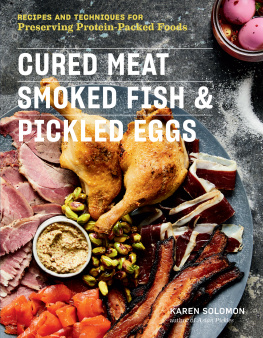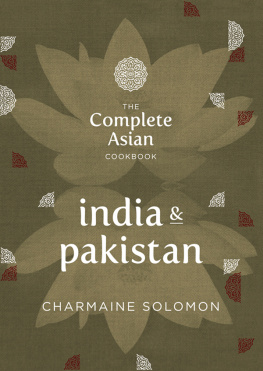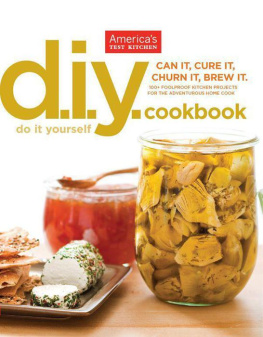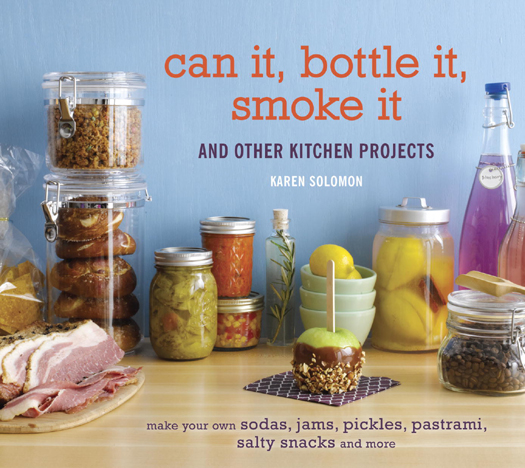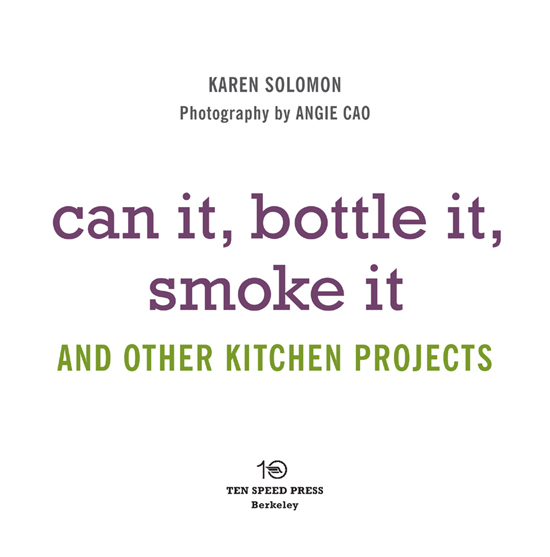Some of the recipes in this book include raw eggs, meat, or fish. When these foods are consumed raw, there is always the risk that bacteria, which is killed by proper cooking, may be present. For this reason, when serving these foods raw, always buy certified salmonella-free eggs and the freshest meat and fish available from a reliable grocer, storing them in the refrigerator until they are served. Because of the health risks associated with the consumption of bacteria that can be present in raw eggs, meat, and fish, these foods should not be consumed by infants, small children, pregnant women, the elderly, or any persons who may be immunocompromised.
Copyright 2011 by Karen Solomon
Photographs copyright 2011 by Angie Cao
All rights reserved.
Published in the United States by Ten Speed Press, an imprint of the Crown Publishing Group, a division of Random House, Inc., New York.
www.crownpublishing.com
www.tenspeed.com
Ten Speed Press and the Ten Speed Press colophon are registered
trademarks of Random House, Inc.
Library of Congress Cataloging-in-Publication Data
Solomon, Karen.
Can it, bottle it, smoke it : and other kitchen projects / Karen Solomon.
p. cm.
Includes index.
Summary: This innovative cookbook offers ideas for adventurous culinary DIYers to stock the pantry with artisan food and drink, kitchen staples, tasty snacks, and gift-worthy eatsProvided by publisher. 1. Canning and preserving. 2. Smoked food. 3. FoodPreservation. I. Title.
TX603.S649 2011
641.4dc22
2010045282
eISBN: 978-1-60774-051-3
Food styling by Karen Shinto
Prop styling by Daniele Kent Maxwell
v3.1
about the author
Food and lifestyle writer KAREN SOLOMON is the author of Jam It, Pickle It, Cure It and The Cheap Bastards Guide to San Francisco, and a contributor to Chow! San Francisco Bay Area. She also writes for the San Francisco Chronicle and is a former editor and columnist for the San Francisco Bay Guardian. Her writing has appeared in Fine Cooking, Yoga Journal, Prevention, the SF Zagat Guide, and dozens of Bay Area and national publications. Visit CanItBottleItSmokeIt.com.
To Matthew, Emmett,
Desmond, and Mabel
contents
acknowledgments
If it takes a village to raise a child, it takes an idiot to write a cookbook. In this case, however, this idiot did not work alone. There are about a jillion people in my universe who deserve recognition and appreciation, and Im likely going to forget many of them. But, if memory serves me correctly.
My first laurel goes to Samantha Tackeff, my intern extraordinaire. She helped birth these recipes when they were just babies, and then did far more than her fair share of clean-up in their wake. And then there was all that testing, tasting, suggestions, and so on. Each and every one of you reading this should hire her at an extremely high salary to do something really, really excellent.
What you may not realize is that the only reason my food looks good is because of the worlds best food stylist and recipe tester, Karen Shinto. And thank god a professional like Betsy Stromberg was in charge of the books design/layout. You gals make food look good.
Clancy Drake is an editorial force to be reckoned with, and a genius in her field. I also thank my agent, Danielle Svetcov of Levine Greenberg, who is worth her weight in sugar and salt. Additionally, I thank Lisa Westmoreland, Ten Speed Press, and Random House for giving me another go.
Other folks to thank in no particular order: Anika Luskin Streitfeld for being the hub of the universe, Adam C. Boardman for the creative soundboarding and the additions to my vintage Tupperware stash, Celia Sack of Omnivore Books in San Francisco for research assistance, and all of my friends who were kind enough to eat all the mistake food that was part of the learning curve. Thanks to my fellow food obsessives in the blogosphere for your endless electron stream of kindness.
A huge shout-out to Josh Adler, formerly of food/art space 18Reasons, for the idea to do the Jam It Salon, my beloved quarterly gathering in San Francisco that forces us food crafters out of the kitchen and into a social setting, tastes in tow. And thanks to Rachel Cole and Rosie Branson Gill who continue to support the gathering. True heartfelt appreciation to everyone who has shown up at this event and shared your pickles, homebrew, preserves, baked goods, and wisdom. You are an inspiration to me every single time. In this same vein, I thank everyone who came to every bookstore appearance and shared their grandmothers recipes, their kitchen lore, and their love of food crafting and kitchen preservation of all stripes.
Food doesnt happen without music, right? Therefore I would be remiss if I did not shed some gracias on Lady Gaga, Arcade Fire, Missy Elliot, every incarnation of Stephin Merritt, the power of MOG, and whoever else made my kitchen sing.
Thank you to Joyce Slaton Lollar for the worlds best punk rock Hello Kitty skull apron; I will always treasure it and wear it to every event. Thank you to my family for your continued supportand for putting up with all that take-out food even though, by all appearances, I had been in the kitchen all day (note: this is every food writers secret shame). Thank you, food eaters everywhere, for your support.
introduction
Call it punk domesticity, urban domestics, hipsters with Mason jars, or just a CAN-do attitude: a humongous tidal swell of interest in food preservation, home canning, foraging, nose-to-tail eating, and back-to-basics DIY kitchen wizardry has been growing in the past few years, and the movement has permanently shaped the way we think about store-bought and packaged foods of all sorts. Obsessive food eaters like you and me are demanding in earnest the same high-quality, artisanal standards from factory-prepared foods like cereals and sodas that weve sought out in our organic produce, hormone-free dairy, and grass-fed beef. In short, weve grown hungry as hell for real food, and we see no need to stomach mass market cookie-cutter food any longer.
Home cooks have burned our palates on too much overbulked food packed with guar gum, dyes, and stabilizers. Weve grown weary of characterless crackers, condiments, cereals, and other same-same packaged food solutions that continue to dominate the interior aisles of the grocery store. Who wants uniform factory-fake food that always tastes the same and looks the same?
Weve come to expect more from what we eat, and were happy to inject a little sweat equity in our fooddonning an apron, picking up a wooden spoon, and forging our own path to good eating and kitchen fun.
Making your own food is awesome. And, in point of pride, crafting your own pantry staples outshines the assembling of a single meal any day. Make chicken and rice and you can eat tonight. Make catsup and miso and you can enjoy the fruits of your labor for months.
When I wrote Jam It, Pickle It, Cure It, my first book on DIY cooking projects, I spent a year in the kitchen tinkering and experimenting to find the best and shortest routes to the kinds of handmade cooking projects that felt, at least to me, overlookedlard, mustard, and marshmallows among them. My goals were simple: make a wide swath of the best project-y eats, using the least amount of effort and specialty gear, in my own urban apartment kitchen. I loved this notion of putting my own stamp on larder staples. I enjoyed writing




